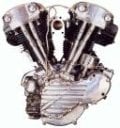Being in my twenties, I lament not having lived in the 80s and early 90s to use the SGIs and other related products. I often re-read old threads here and look at photos online with nostalgia. Currently, I have several problems with today's market.
1. I don't like the OS choice. Currently the market is pretty much Windows, OS X (wintel still) and GNU/Linux. I have a particular hate for GNU/Linux and try to avoid it outside of my work. I have never owned an Apple product and after they went to wintel, I pledged never to buy one ever. To this day my wife and I have had or used 0 iCrap products. I personally like to use FreeBSD, but the lack of software support for some major applications leave it out of the market. It took GNU/Linux 20 years to start being recognized in key consumer areas (like the gaming industry and media/design). Currently the market is set: Windows - OS X - GNU/Linux. Anything else is considered hobbyist and is very limited in a professional environment software-wise.
2. The architecture. x86 (with 64bit extension) is just overwhelming. Indeed, ARM is making progress, but it's still not enough to be an alternative. All the other RISC (basically POWER and SPARC) are used in mid to enterprise level and dropped the workstation line somewhere between 2006-2009. This is far worse than the OS problem. There really isn't an alternative here and we can only hope AMD doesn't go bankrupt as then wintel will be a full monopolist.
I do own a modern computer, which I consider selling for parts, but there is just nothing that can meet today's demands in terms of work and home use. Just a short list of the things not available (or current versions) outside of x86: Java, Flash, some codecs, GPU support, peripheral support (webcam, headphone, mouse, cell phone), etc.
Is there any hope for the future and a cure for this casualware x86 windows/mac/linux dominance? I want to get rid of (at least my home) computers, but there simply isn't an alternative. And it doesn't look like one will come (I don't consider ARM a possible success in the desktop/workstation market).
Or maybe I should just buy a Tezro, max it out, and hope for the best... still I can't find one under the $1000 range (even not maxed).
I always say, if only I could have been born 20 years earlier and catch the entire IT industry since the (relative) start...
What is one to do or hope for, besides wait another 10+ years to see the next thing out?
1. I don't like the OS choice. Currently the market is pretty much Windows, OS X (wintel still) and GNU/Linux. I have a particular hate for GNU/Linux and try to avoid it outside of my work. I have never owned an Apple product and after they went to wintel, I pledged never to buy one ever. To this day my wife and I have had or used 0 iCrap products. I personally like to use FreeBSD, but the lack of software support for some major applications leave it out of the market. It took GNU/Linux 20 years to start being recognized in key consumer areas (like the gaming industry and media/design). Currently the market is set: Windows - OS X - GNU/Linux. Anything else is considered hobbyist and is very limited in a professional environment software-wise.
2. The architecture. x86 (with 64bit extension) is just overwhelming. Indeed, ARM is making progress, but it's still not enough to be an alternative. All the other RISC (basically POWER and SPARC) are used in mid to enterprise level and dropped the workstation line somewhere between 2006-2009. This is far worse than the OS problem. There really isn't an alternative here and we can only hope AMD doesn't go bankrupt as then wintel will be a full monopolist.
I do own a modern computer, which I consider selling for parts, but there is just nothing that can meet today's demands in terms of work and home use. Just a short list of the things not available (or current versions) outside of x86: Java, Flash, some codecs, GPU support, peripheral support (webcam, headphone, mouse, cell phone), etc.
Is there any hope for the future and a cure for this casualware x86 windows/mac/linux dominance? I want to get rid of (at least my home) computers, but there simply isn't an alternative. And it doesn't look like one will come (I don't consider ARM a possible success in the desktop/workstation market).
Or maybe I should just buy a Tezro, max it out, and hope for the best... still I can't find one under the $1000 range (even not maxed).

I always say, if only I could have been born 20 years earlier and catch the entire IT industry since the (relative) start...
What is one to do or hope for, besides wait another 10+ years to see the next thing out?
_________________
I B M pSeries 610 | type: 7028-6E1




















 180 MHz
180 MHz

